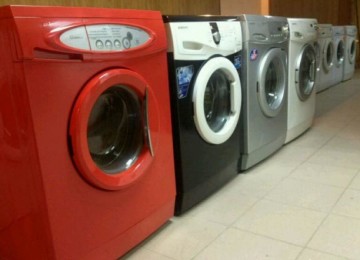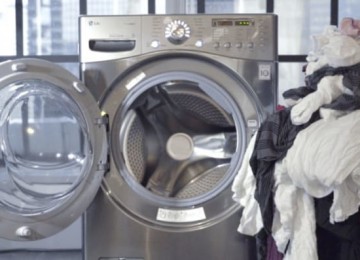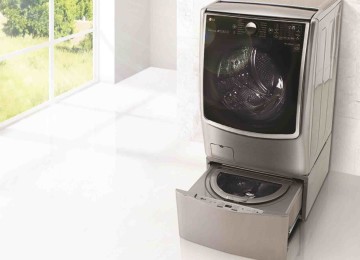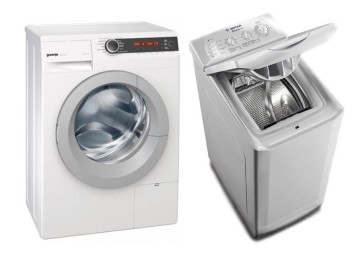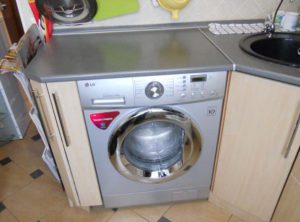 A large number of things that need to be washed constantly accumulate in the house. Of course, it is more convenient to do this in the bathroom. It is best suited for washing. However, not everyone has enough space in this room. Then you have to look for another way out. A good option is an under-counter washing machine in the kitchen. At first glance this looks like something very complicated. In this article we will tell you how this can be done.
A large number of things that need to be washed constantly accumulate in the house. Of course, it is more convenient to do this in the bathroom. It is best suited for washing. However, not everyone has enough space in this room. Then you have to look for another way out. A good option is an under-counter washing machine in the kitchen. At first glance this looks like something very complicated. In this article we will tell you how this can be done.
Decision-making
Before you start work, it is important to decide and make the right decision.
What factors make sense to take into account?

- Most modern apartments are small. At the same time, there is usually not enough space in the bathroom. Therefore, installation in the kitchen is not so much a matter of convenience as it is of necessity.
- An important point can be considered the separation of bathroom functions. If laundry can be done in the kitchen, there is no need to wait for the shower to stop occupying it. And if we talk about those apartments where the bathroom is combined with a toilet, then this issue is even more important.
- Don't forget about the danger of corrosion. The humidity in the bathroom is traditionally high, and this can damage the metal parts of the washing machine.In the kitchen, this factor is much weaker.
- It often happens that more space is created in the kitchen for a washing machine. This gives greater freedom when choosing the most suitable model.
- The kitchen is the only place in the apartment, other than the bathroom, where all the necessary communications are initially present.
Model selection
Even if the installation issue has been resolved in principle, it is very important to choose the right model.
- There are front-loading machines and there are vertical-loading machines. The latter are much less convenient for the kitchen. Typically, the top surface is covered by a countertop, and the front is open for loading laundry.
- Modern built-in models provide reduced vibration, which is combined with fairly high power during operation. If you cover it with a countertop, then you can cook food here or, for example, place a microwave.
- Although it may seem unusual, in some cases (especially for very small kitchens) the option of placing the machine directly under the sink may be considered. In this case, the height of the washing machine should not be more than 60 centimeters.
Planning
In order to successfully implement your plans, it is very important to plan everything correctly. Many apartments, especially those built during the Khrushchev era, do not have much space.

The appearance of the washing machine is much more modern compared to various pieces of old furniture. A harmonious combination between them is unlikely to happen. Therefore, it is a smart decision to install the machine when updating the entire kitchen furniture.
Let's proceed directly to planning.
- You need to prepare a blank sheet of paper and a pen or pencil. When allocating space, you need to take into account the dimensions of all the furniture that should be in this room.
- The next step is to take measurements. In this case, you need to take into account the size of both the kitchen itself and each piece of furniture that is located there.
- It is convenient to start placement in order to distribute the largest items. If there are a lot of them, it makes sense to cut out paper figures whose sizes correspond proportionally to them.
- When placing it, you need to imagine as clearly as possible how it will all look in reality. It is important to take into account communications and ease of passage and work in the kitchen.
- Having arranged the main, most important and large items, you can think about the location of the remaining ones. In this case, you need to take into account the shape and size of each item as accurately as possible.
- When planning, it makes sense to pay special attention to the accuracy of the installation of corner cabinets. The slightest mistake when installing them can lead to the most serious consequences.
- It is necessary to clarify the dimensions of the washing machine, taking into account the various protrusions. If this is not done, during installation it may turn out that it is almost impossible to install the washing machine in this place.
Calculation of space directly for the washing machine
When considering its size and shape, it is important to take into account some features of the location.
- When determining the distance from the wall, you need to add at least ten centimeters additionally. There will be various rods and filters located there, and appropriate space must be provided for them.
- Usually in washing machines the height of the legs is adjustable. This is true, but there are limits here too. If the height is calculated incorrectly, it may turn out that the legs will have to be unscrewed altogether in order for everything to fit in the allotted space. It is recommended not to let this happen, but to accurately calculate the required height in advance.
- There are also special requirements for width. It is recommended to leave an extra two centimeters on both sides. The fact is that during operation the machine vibrates and also sways, and if you don’t think about it in advance, it will touch the adjacent walls of the furniture.
- It's important to remember that it's not just about providing space; That for the machine to operate, unhindered access to its various components is necessary. This applies to the powder cuvette, the hatch, a separate hatch for the waste filter and the waste water drain hole.
- Sometimes various decorative strips are used for design purposes. In no way should they violate the requirements for the location of the washing machine, which are set out here.
Connection to necessary communications
To work, you need to connect to three types of communications:

- sewer drains for waste water;
- sockets from which the machine will receive energy;
- pipes or hoses for supplying hot or cold water.
First, let's take a closer look at how the socket is installed.Technically, this is one of the most difficult and responsible issues during installation. The fact is that there may be high humidity near the machine, which can cause malfunctions. In addition, the power supply requires quite a lot of power, and this requires special attention during installation.
It is also recommended to use additional devices that will ensure safety during operation.
- Devices that perform emergency shutdowns. They are important if there are strong voltage fluctuations in the network. Moreover, their use eliminates the possibility of a fire for the reason discussed here.
- A circuit breaker that trips when there is a short circuit.
A few tips may be helpful during installation.
- Connections between copper and aluminum wires should be avoided.
- Do not use water pipes or heating radiators for grounding.
- Choose your outlets carefully. It is preferable to use more reliable ones (those with a ceramic base).
- Do not use extension cords or adapters for different types of outlets.
- Remember that connecting the neutral wire to the ground wire is not recommended.
- If electrical communications are laid for use by a washing machine, calculate what else can be connected to them. This is necessary to determine the maximum power for which they will be designed.
In order to equip a drain, you need two things: you need a special tank under the kitchen faucet, where there is an additional hole for connecting the hose and the hose itself. It is necessary to make sure that the length of the latter is sufficient for connection.
It should be noted that the best recommendations for connection are given here. Implementing them requires work, but the result will be a high-quality, reliable and durable connection. Of course, you can make it simpler, but this will make washing much more labor-intensive and risky (possibility of short circuit, water leakage).
Direct preparation for work
Before starting work, you need to prepare materials and tools:

- Pliers.
- Tape measure for precise distance measurement.
- Adjustable wrench.
- Building level for precise installation of the machine.
- Voltage detector in the form of a screwdriver.
- Water hoses for water inlet and drainage after washing.
- A utility knife will be required for unpacking.
- You need a filter with a mesh and a tap for installation on the pipe.
- Sealing photoplastic tape.
- Pliers.
- Various fasteners.
Unpacking
After the workplace was prepared, it was time to unpack the washing machine.
It should be noted that upon opening the box, we will see many additional fasteners.They are designed to make transportation safer. All such fasteners must be removed before installation can begin.
- On the rear panel of the machine there are bolts that attach the tank. They need to be removed.
- The drain hose and power cord are attached with special brackets. Before starting work, they are disconnected and placed side by side.
- In some cases, bars are placed between the tank and the body. They can be pulled out by tilting the washing mashine.
Installation process
Since the machine will be installed not just in the center of the kitchen, but as an integral part of a set of kitchen furniture, it should be positioned in such a way as to best suit the overall design of the kitchen.

Here you can offer several options.
Here are the ones that can be considered the most common:
- You can simply allocate space between adjacent elements of the kitchen unit by simply placing the washing machine on the floor. This option is reliable, but it is suitable when its appearance does not contradict the overall design.
- It is possible to make a kind of wooden container, inside of which everything will be located. This way the overall appearance will not be disrupted. However, in this case, certain requirements are imposed on the wooden box.
- It is possible, in a sense, to combine the previous options. To do this, the kitchen furniture set must have a common front panel that will cover the washing machine with a special door.
Now let's clarify the features of the various approaches listed here.When using a container, there is no need to install the back wall, otherwise connecting to communications will become significantly more complicated. It is advisable that the machine stands on its own legs without the use of additional stands. When filled with water, it weighs quite a lot and only a strong support can support it.
More about communications
The next step is to connect communications.
This has been discussed above, but several important clarifications are necessary.
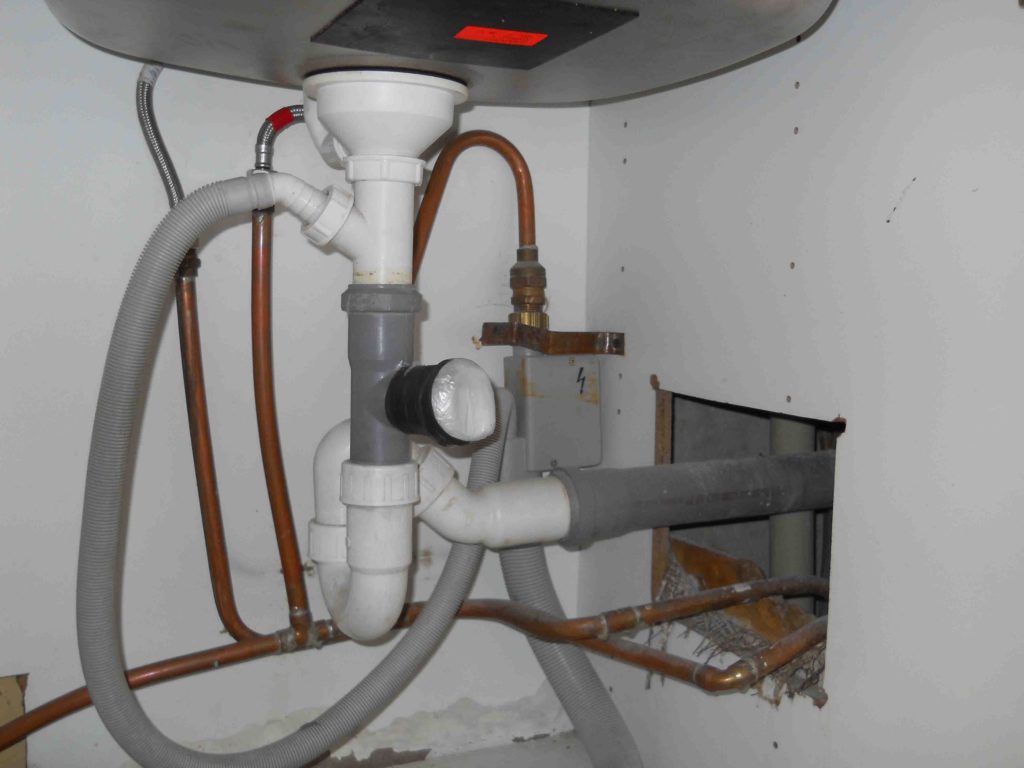
- The hose that comes with the washing machine has a certain length. Of course, technically it can be increased, but this is not recommended. The fact is that the proposed length corresponds to the power of the pump that was installed on the machine. For normal operation, a longer hose will require a more powerful pump.
- Connecting the drain by connecting it to a drain siphon will work fine. However, there is a risk of unpleasant odors coming from the drain in the washing mashine. To ensure this is avoided, it is recommended to use another, additional siphon when connecting. Usually a special variety is used for this purpose, which does not allow odors to pass through.
- When connecting water, a drain is made using a special triple edge and an additional pipe. The valve must provide the ability to turn off water from the machine while maintaining flow into the apartment for normal purposes. As you know, the purity of water is usually not ideal, and this gradually leads to contamination of the pipes and heating tank of the machine.In order to fix this, it is recommended to install an additional filter on this section of the pipe.
Conclusion
Installation work is a labor-intensive process that requires careful attention. However, installing a washing machine yourself will allow you to take into account the specific features of the situation to the maximum extent.
Carrying out such work efficiently and reliably yourself is quite possible if you work accurately and carefully.






